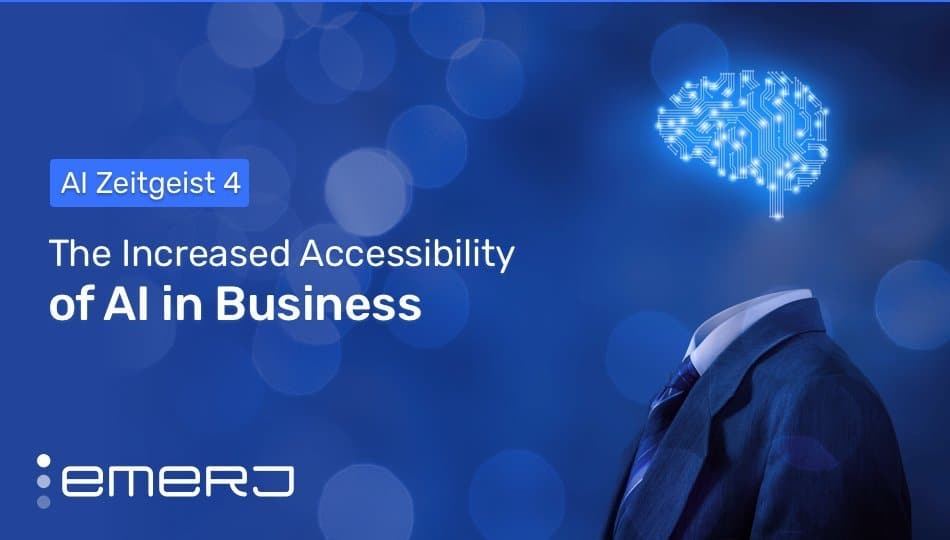
This article is part 4 of a 7-part series called “AI Zeitgeist,” where we’ll be mapping out the details of AI adoption over the next 10 years and explore the critical changes in the AI ecosystem that business leaders need to understand.
In this installment of the Zeitgeist series, we’ll be talking about how artificial intelligence technologies will become more accessible to businesses and non-technical employees.
Today, if you don't have a strong data science background, you are very unlikely to leverage powerful AI vendor tools. In five years, many vendor tools will require almost no formal data science training, and that transition is something that very few business leaders consider.
AI accessibility will evolve as we move from the “Emergence” phase, where AI remains a wizard-skill that's inaccessible to many companies, to the “Dispersion” phase, where AI becomes ubiquitous and simple to use across almost all business sectors.
(Note: If you haven’t read the first article in the AI Z...
You've landed on exclusive content for Emerj Plus Members
Emerj Plus Membership
In-Depth Analysis
Consistent coverage of emerging AI capabilities across sectors.
Exclusive AI Capabilities Matrix
An explorable, visual map of AI applications across sectors.
Exclusive AI White Paper Library
Every Emerj online AI resource downloadable in one-click
Best Practices and executive guides
Generate AI ROI with frameworks and guides to AI application







